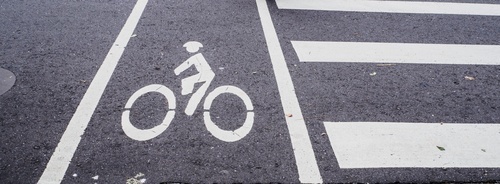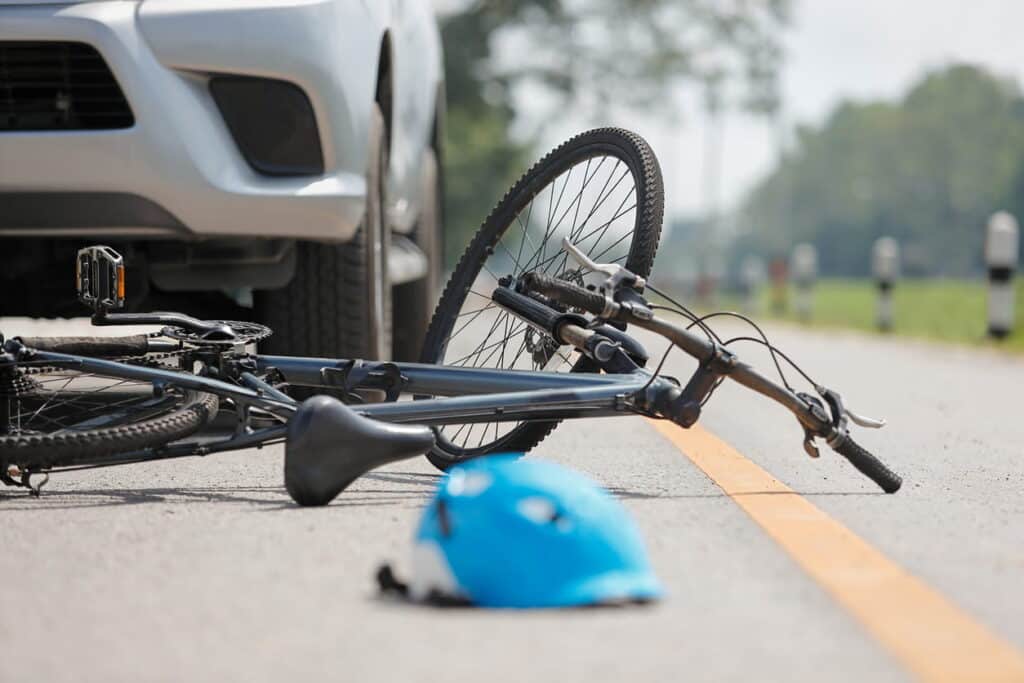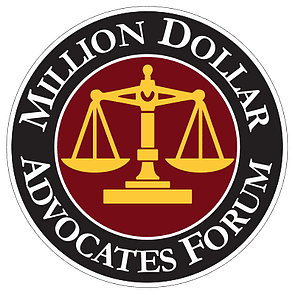Too many of us are hardly enthusiastic about wearing that untrendy bicycle helmet, especially if it’s a hot and muggy day or you grew up before it was an established requirement.
But the fact of the matter is that bicycle helmets save lives. According to the U.S. Department of Transportation, there were 48,000 reported bicycle injuries in 2013 and over 700 deaths. This contrasts with the estimated 494,000 ER visits associated with bicycle injuries over the same time frame but reported by the Centers for Disease Control (CDC).
START YOUR FREE CONSULTATION
NO FEES UNLESS WE WIN!
Common reasons for bicycle accidents
Getting hit by a car was reported as the dominant cause of non-fatal bicycle injuries across the U.S. in 2013. Bicycle accidents were ranked by percentage for the major causes for the year:
- 29% hit by a car
- 17% rider fall
- 13% rider error
- 13% road in poor repair
- 7% Crash
- 4% Canine intervention
Although bicycle accidents involving a car are less than 1/3 of all bicycle accidents, most fatalities are associated with bicycle-motor accidents. It is important to note that different agencies, entities, and organizations report different results with varying percentages based on the source of that information.

Who is at fault is the big question
Negligence requires proof of several elements:
- The driver has been cautious
- The other individual (the cyclist) has not been careful, and has been negligent
- The driver has been reckless or negligent by speeding, running a stop sign, or failing to respect road lanes, specifically the bike lane
- The cyclist has been careful and cautious
Recklessness comes into play when someone acts as though they shouldn’t or how a reasonable person would in that situation. Intersections are especially dangerous for bicycle riders because motor vehicles often fail to look for cyclists, or the bicycle and its rider are not visible.
Fault: Determining who is at fault is unlike between a pedestrian and a motor vehicle because the pedestrian always has the right of way. This is not true of a bicycle rider who is required to follow the same rules as any vehicle on the road and is subject to the laws of the road. Nearly half of all bicycle accidents that involve a car are at an intersection. However, most bicycle accidents do not involve a car and are just the bicycler under adverse circumstances.
Right of way: If there is no traffic light or a stop sign, then the rule of thumb is whoever arrived first at the intersection is entitled to make the first move. If they both arrived simultaneously, then the driver to the right has the right to make the first move unless one street is a major artery and the less so. In those instances, the driver on the major roadway has the preference.
9.7% of collisions occur at an intersection where the bicycler has a stop sign, and the car does not. The cyclist stops at the stop sign and then takes off without regard that the motor vehicle, in this instance, has the right of way. In other words, the cyclist is at fault. Motor vehicles, including trucks, tend to avoid providing a bicycle the normal road-worthy considerations. They indiscriminately cut off the bicycler when changing lanes, for example.
9.3% of collisions at an intersection occur where the cyclist does not have a stop sign, but the motor vehicle does. The motor vehicle driver stops at the stop sign and proceeds into the intersection ahead of the bicycle. In this case, the bicycle rider has the right of way, and when an accident ensues, the car’s driver is at fault unless the cyclist is riding against traffic. 60% of this sort of collision befalls the bicycler when riding on the wrong side or simply against traffic. Both may be at fault.
Riding a bicycle against traffic, contrary to what many think and do, is illegal for the same reason already mentioned: the bicycle is a vehicle and must adhere to the same traffic laws as motor vehicles.
7.1% of intersection accidents arise when the bicyclist fails to yield to the right-of-way. When entering the intersection after making a full stop, with or without a stop sign, the cyclist fails to yield to the motor vehicle driver when they are required by law to do so. The bicyclist may not have seen the car; maybe the car was closer or traveling faster than anticipated. Most of these accidents find the bicyclist at fault.
In instances where the car and the cyclist advance to the intersection from opposite ends, and the car enters the intersection, turns left, and then impacts with the bicyclist, the motor vehicle’s driver is at fault. This results from the motorist not seeing the cyclist, misjudging the cyclist’s speed or the distance from impact.
A car passes a bicycle, and both are nearing an intersection. The car then turns right at the intersection, cutting off the cyclist. Similarly, who is responsible if the bicycle passes a slower-moving car along the right-hand side and the car turns right into the bicycle? If both a car and bicycle are waiting at a light, when the light changes, the car turns right, colliding with or cutting off the bicycle. Believe it or not, the car is at fault for the most part. It is also true that passing on the right is illegal, bicycles included.
The state laws define traffic and therefore bicycle laws
Motor vehicle and traffic laws are mostly based on state law. This includes bicycle lanes. States legislate bicycle helmets though some localities do so as well. Not all states have legislated helmets, but for those that have, they typically require helmets for youth under the age of 14, 16, or 18. CA requires helmets under the age of 18 and NY under the age of 14.
Typically, the last 100 feet of the bicycle lane becomes the turning lane for cars unless other circumstances are present.
Sharing the road remains an effort for both motor vehicles and bicycles, but continuing that endeavor will be worthwhile for everyone. Bicycles will continue seeking greater representation in urban centers where cars are already inconvenient.
Contact our experienced personal injury attorneys
If you’ve been in a bicycle accident, our skilled Las Vegas accident attorneys can help. Let our team evaluate your claim and guide you through the process. Contact Adam S. Kutner, Injury Attorneys, today to discuss your case.
Areas We Service in Las Vegas, Nevada
Las Vegas Strip | Henderson | Anthem | Summerlin | Paradise | Spring Valley | North Las Vegas | Summerlin North | Summerlin South | Sunrise Manor | Nellis AFB | Desert Shores | Downtown South | Charleston | Richfield | Crestwood | Angel Park Ranch | Queensridge | Casa Grande Pines | Winchester | West Las Vegas | Green Valley North | Lake Las Vegas | Sun City Summerlin | La Madre Foothills | Tule Springs | Mac Donald Highlands | Green Valley Ranch

Las Vegas Bicycle Accident Testimonial
“My dad recommended me to go to Adam after my accident
The customer service and comunicaron is amazing. I should recommend this office to anyone involved in an accident. They deliver results.”













